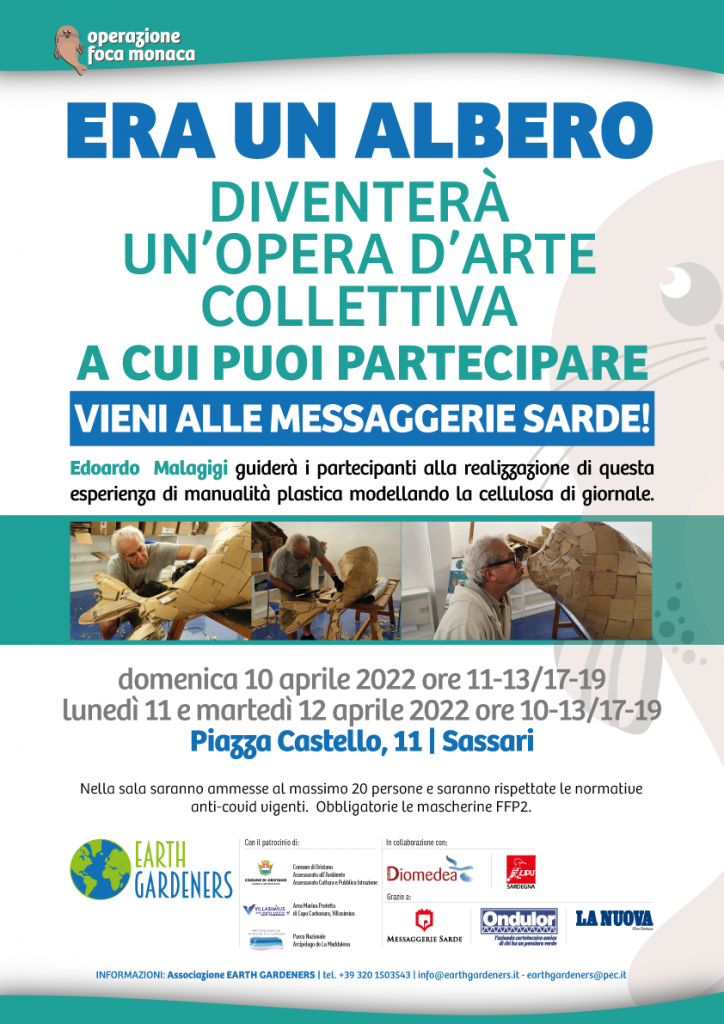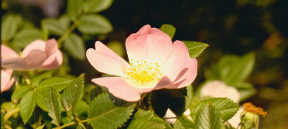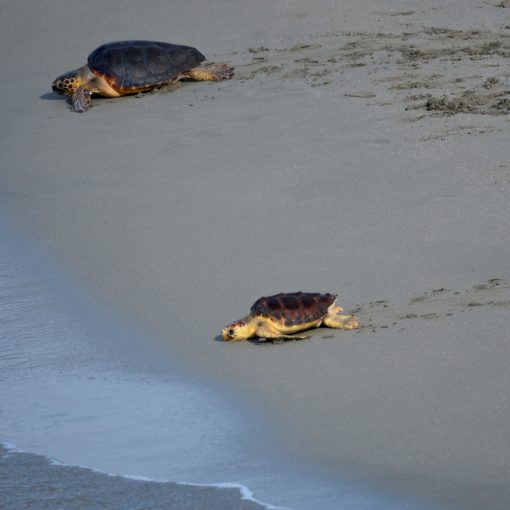– Was it a tree?
– Yes, the monk seal made with corrugated cardboard was previously a refusal; and before it became a waste it was a box that contained the books of the Sardinian Messaggerie bookshop; and first, it was a corrugated cardboard plate perhaps produced by the Ondulor firm; and before it was a large reel of paper, perhaps recycled; and first it was wood pulp from which cellulose was extracted to produce paper; and before it was a tree planted and cultivated for the paper and cardboard industry.
– And now will it become a Collective Work of Art? What is a Collective Work of Art?
– It is a complex work that brings together and joints the works or small pieces of works of different authors organized by a coordinator with a specific intention.’
In our case, as we have already told (https://www.earthgardeners.it/2021/10/01/costruire-con-angela-e-edoardo-due-foche-monache-con-materiale-sottratto-al-macero/), Edoardo Malagigi and Angela Nocentini have built the supporting structure of the Opera which will be finished from 10 to 12 April next in Sassari, in the premises of the Sardinian Messaggerie, by anyone who wants to participate.
Edoardo will lead the experience of plastic manual skill development.
– What does this Collective Artwork represent? And how was it built?
– It represents an adult male monk seal, as this action is an integral part of the MONACO FOCA project. (https://www.earthgardeners.it/2021/09/08/operazione-foca-monaca-2/).
La Foca was built like this: https://youtu.be/OYmxd_-UUpQ
– What will happen during the workshop to be held at the Messaggerie Sarde from 10 to 12??
– The cardboard supporting structure will be covered by modeling the paste made with unsold newspapers, by all those who want to participate in the Opera and put their signatures on it. For those who want to participate in a group, we recommend booking by writing to info@earthgardeners.it.

– What is the “goal” that should encourage citizens of all ages to participate?
– Besides participating in an action of great artistic and social value, they will give life to a masterpiece that in the field of environmental education is defined as an “educational object in itself”. Its presence alone, in fact, induces reflections of vital importance:
- it reproduces a species in serious danger of extinction and therefore it alludes to the importance of biodiversity conservation;
- it is built with waste materials and so it marks the importance of proper management of planetary resources;
- through the installation that accompanies and completes it, it claims its “descent” from trees and underlines the importance of the planet’s vegetation cover for the survival of animal species, including ours.
– What is the installation that accompanies it?
– The reader will not think that we will reveal everything here!
For now we can only say that this pyramid-shaped installation will preserve the memory of the names of those who participated, and in doing so they wanted, at least for once, to support the encounter between art and science in order to preserve Nature.
Credits:
Author: Anna Lacci is a scientific popularizer and expert in environmental education and sustainability and in territory teaching. She is the author of documentaries and naturalistic books, notebooks and interdisciplinary teaching aids and multimedia information materials.
Translation by Maria Antonietta Sessa



